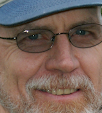Core Power
After
months of shoveling snow and swinging hammers on those inside
remodeling projects, what a relief to anticipate swinging a golf club when spring arrives!
However the anticipation may be less painful than that actual
performance, if we haven't taken steps to get ourselves ready.
A progressive stretching program is a must for anyone before they attempt to swing a club. A few principles to keep in mind: Learn how to isolate the muscles you trying to stretch; Train, don't strain; Don't bounce or force yourself through pain to reach a goal; Let your body glide into stretch positions. (For some very good and affordable information on stretching, consider using Mike Pedersen's 7 Minutes Golf Stretching DVD)
We have explored the role of fascia in our bodies and its implications for the golf swing. 'Coiling and uncoiling' is directly related to properly functioning myofascial system.
Here, I intend to present some helpful information regarding 'core power' The development of the core is a factor of muscle balance, strength and power.
Real Chains
Identifying the weak link(s)
"Like a chain, the golf swing
is dependent upon all the needed muscle groups making a contribution...
Optimal conditioning of your trunk links the lower and upper body and
allows the muscle groups to harmoniously work and produce a powerful
and consistent swing" From Core Powered Golf By Neil Wolkodoff
This book
offers easy to follow explanations of the mechanics involved in the
golf swing and how to develop your core to not only improve your game
but protect yourself from injury.
One of my early Physical therapist mentors, Robert Spackman PT*, used to remind his students, "the greater the baggage, the shorter the trip". He loved to emphasize the need for lifetime exercise and fitness and he could be seen pedaling his old single speed Schwinn to work everyday as well as playing racquetball with his students and colleagues.
*Former head trainer of the Southern Illinois University Sports teams.
The reality is that with age comes decreases in metabolism that tend to overstuff our trunks. Not only do large trunks threaten the length of our life's journey, they also create an unstable center of balance. Without a stable core, we are prone to injury. The average golfer cannot store and apply energy during his/her golf swing and this results in random rather than repeatable results.
Recent research articles confirm what many of us already know. Responses to the question "What Body part hurts the most after a round of golf?" 54% of responses were "my low back"
It comes as no surprise to most of us that the low back and abdomen or 'core' is for most of us the weakest link in the chain. This provides for us both the cause for in ineffective swing and the key to an improved and 'pain less' round of golf.
In addition to flexibility which is a function of the myofascial system,"Strength and power in one muscle group are dependent upon another muscle group to the make the application for golf...An effective golf swing is one where the arms, legs, trunks and shoulders coil or store energy, and then release and direct that energy so that maximum consistent impact occurs with the golf ball.
Power is a function of the rotational energy in the backswing, a function of the turn versus resistance, coined the 'x' factor....The core muscles are important to all three of these energy sources with contributions ranging from stability to rotational energy.
Any weak link in the chain
causes force to be lost somewhere in the golf swing. From this
perspective, golf is a total body athletic event; almost every major
muscle group in the body contributes to the golf swing and should be
enhanced using physical training. The core or trunk of the body links these various muscle groups." From Core Powered Golf by Neil Wolkodoff p.11
Next, linking to the core by training, not straining. Until then...
Steve McMurray MPT

No comments:
Post a Comment